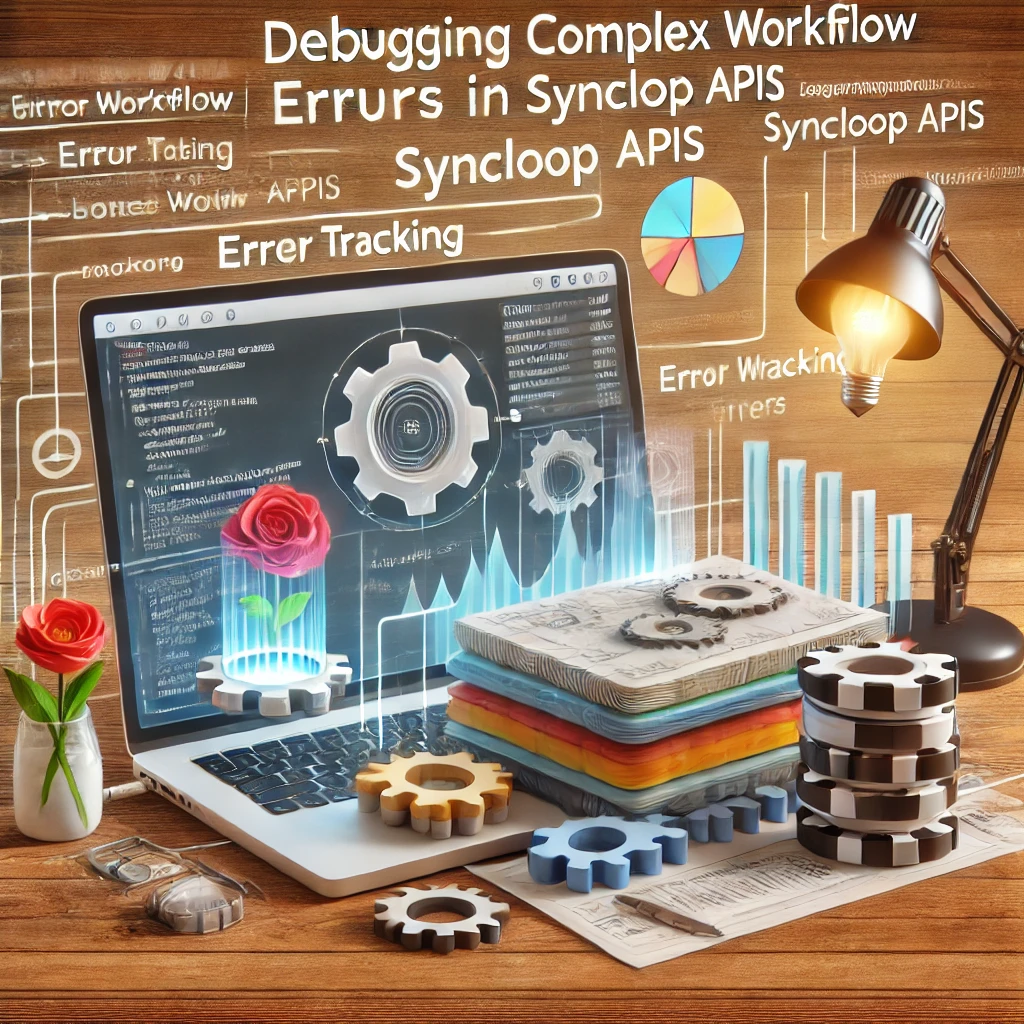Debugging Complex Workflow Errors in Syncloop APIs

Why Debugging Workflow Errors is Challenging
Complex workflows in APIs often involve:
- Multiple Dependencies: Interactions between various systems and services.
- Dynamic Logic: Conditional paths and asynchronous operations that vary based on runtime data.
- High Volume: Large numbers of concurrent requests, increasing the likelihood of issues.
- Diverse Error Sources: Errors can originate from inputs, external services, or logic inconsistencies.
These challenges require robust debugging strategies to maintain API reliability.
Features of Syncloop for Debugging Workflow Errors
1. Real-Time Monitoring
Track workflow execution and identify bottlenecks or failures as they occur.
2. Detailed Logs
Access comprehensive logs for requests, responses, and errors to pinpoint root causes.
3. Workflow Visualization
Visualize workflows to understand execution paths and identify problematic nodes.
4. Conditional Debugging
Use Ifelse controls to debug specific branches of a workflow based on conditions.
5. Error Handling Tools
Configure Redo controls and fallback workflows to test and recover from errors dynamically.
Steps to Debug Workflow Errors in Syncloop
Step 1: Monitor Workflow Execution
Use Syncloop’s real-time monitoring dashboard to:
- Identify failed workflows.
- Track execution times and error rates.
- Highlight bottlenecks in the workflow.
Step 2: Analyze Logs
Examine logs for failed workflows to determine:
- Input and output data.
- Error messages or codes.
- External API responses or timeouts.
Step 3: Visualize Workflow Paths
Leverage Syncloop’s workflow visualization tools to:
- Map out execution paths.
- Highlight skipped or failed nodes.
- Understand conditional branches and their impact.
Step 4: Test Specific Nodes
Debug individual nodes or steps in the workflow by:
- Testing with mock inputs to isolate issues.
- Adjusting node configurations to resolve errors.
Step 5: Use Conditional Debugging
For workflows with dynamic branches, use Ifelse controls to:
- Debug specific conditions.
- Bypass problematic paths temporarily.
Step 6: Implement Error Recovery
Enhance workflows with error-handling mechanisms:
- Redo Controls: Retry failed steps automatically.
- Fallback Workflows: Execute alternative paths when critical nodes fail.
Common Workflow Errors and Solutions
1. Input Validation Errors
- Symptom: Workflow fails due to incorrect or missing input data.
- Solution: Use Transformers to validate and sanitize inputs before processing.
2. External API Failures
- Symptom: Workflow halts due to timeouts or invalid responses from external APIs.
- Solution: Implement retry logic with Redo controls and fallback workflows.
3. Logic Errors
- Symptom: Workflow executes incorrect paths due to misconfigured conditions.
- Solution: Debug conditional branches with test data and adjust logic as needed.
4. Asynchronous Task Failures
- Symptom: Await tasks do not complete, causing delays or errors.
- Solution: Monitor task completion and handle timeouts with fallback logic.
Best Practices for Debugging Syncloop Workflows
- Log Extensively: Enable detailed logging for all workflow steps to aid in root cause analysis.
- Test Incrementally: Debug workflows step-by-step to isolate problematic nodes or paths.
- Use Real-Time Monitoring: Track execution metrics continuously to identify trends and recurring issues.
- Leverage Visualization: Use workflow diagrams to understand complex dependencies and flows.
- Implement Robust Error Handling: Prepare for failures with retry mechanisms and fallback options.
Why Choose Syncloop for Workflow Debugging?
Syncloop’s comprehensive debugging tools provide the visibility and control needed to manage complex workflows effectively. Its real-time monitoring, detailed logs, and intuitive workflow visualization streamline the debugging process, enabling developers to resolve issues quickly.
Conclusion
Debugging complex workflows in Syncloop APIs requires a combination of robust tools and systematic strategies. By leveraging Syncloop’s monitoring, logging, and visualization capabilities, developers can identify and resolve errors efficiently, ensuring reliable API performance. Implement these practices to simplify debugging and maintain seamless operations for your applications.
Back to Blogs